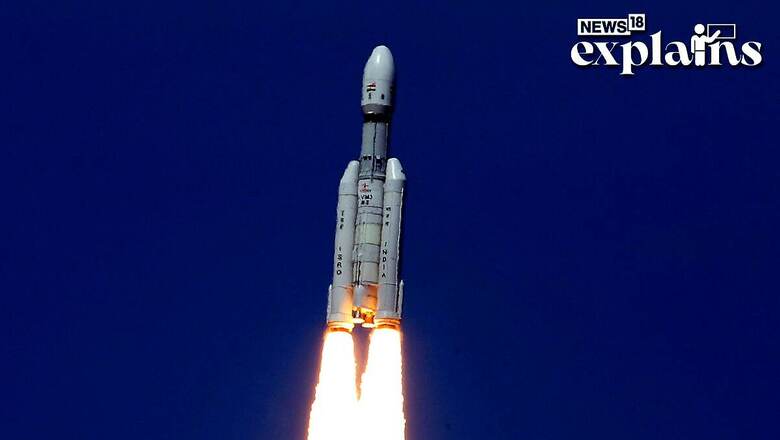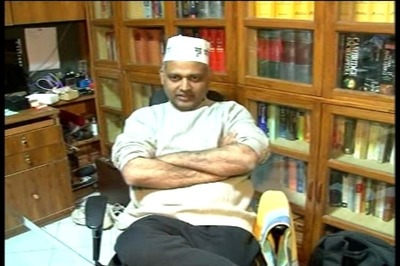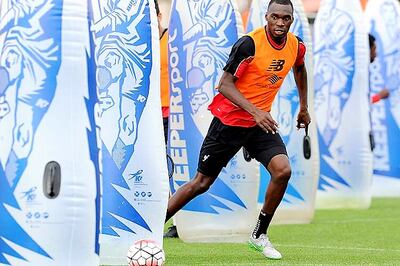
views
In a historic feat, Chandrayaan-3 Lander Module successfully landed on the surface of the Moon on Wednesday evening. The Lander successfully made a soft-landing on the lunar surface as per the schedule.
The lunar mission is aimed to study the southern polar region of the Moon, a region with water ice or frozen water, that could be a source of oxygen, fuel and water for future moon missions or a more permanent moon colony.
However, the real work for the ISRO scientists has started after the touchdown as they will be busy with the rover operations for one lunar day or 14 Earth days. The scientists will have to analyse tonnes of data coming from five scientific instruments on board the lander and rover.
What Will Happen After Touchdown?
The Lander and the Rover will carry our a series of experiments including a spectrometer analysis of the mineral composition of the lunar surface for two weeks.
Shortly after the touchdown, the panel of the Vikram lander unfolded, creating a ramp for the Pragyan rover. The six-wheeled Pragyan with a national flag and ISRO logo will descend from the lander to the lunar surface after four hours and move at a speed of 1 cm per second.
Chandrayaan-3 Mission:Here are the images of Lunar far side area captured by the Lander Hazard Detection and Avoidance Camera (LHDAC).
This camera that assists in locating a safe landing area — without boulders or deep trenches — during the descent is developed by ISRO… pic.twitter.com/rwWhrNFhHB
— ISRO (@isro) August 21, 2023
The rover will use navigation cameras to scan the lunar surface and as it rolls, it will leave imprints of the tricolour and ISRO logo on the lunar soil. The rover has instruments configured with payloads to provide data related to the Moon surface. The rover will communicate with the lander, which in turn will communicate with the earth.
What Will the Lander and Rover Study?
The mission objectives of Chandrayaan-3 are to demonstrate safe and soft landing on lunar surface; to demonstrate rover roving on the moon; and to conduct in-situ scientific experiments.
Apart from the mission objectives the payloads attached to the Lander and rover will carry out several study and send back data about the lunar surface, the processes of lunar body and its formation.
The space craft carries a set of eight payloads, including one provided by the American space agency NASA. The payloads will gather data on the elemental composition of the Moon’s atmosphere and send data to the lander.
Here are some of the functions that the payloads deployed with lander and rover perform:
- The Vikram lander, with its three payloads, will measure the near surface plasma density, carry out measurements of thermal properties of lunar surface and measure seismicity around the landing site. This research is crucial for future exploration missions on moon, especially if humans are to stay on the Lunar Surface for extended periods or use it as a base for interplanetary travel.
- Two payloads- Radio Anatomy of Moon Bound Hypersensitive ionosphere and Atmosphere (RAMBHA) and Langmuir probe (LP) will conduct experiments to study the near-surface plasma activities on the Moon.
- The Lander Module is also carrying a special instrument called Instrument for Lunar Seismic Activity or ILSA. The main job of ILSA is to detect and study lunar quakes, which are rumblings under the surface of the Moon. If the rumblings are confirmed, it opens up exciting possibilities for future exploration, India Today reported.
- Chandra’s Surface Thermo-Physical Experiment (ChaSTE), one of the payloads in the Lander Module, will provide valuable data about the Lunar surface’s response to temperature variations and will help in understanding the processes that shaped the Moon’s terrain over millions of years.
- The Lander also has LASER Retroreflector Array (LRA), which is a passive experiment to understand the dynamics of Moon system. It is also designed to facilitate real-time distance measurements between the Moon and Earth. This knowledge will help in accurately predicting tidal patterns, understanding ocean currents and managing coastal environments.




















Comments
0 comment